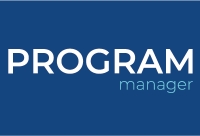Program Manager panel: Continued MGA market growth expected

11 April 2025
The fundamental drivers that have driven the MGA and programs market’s growth in recent years remain in place, with the fast-evolving risk landscape set to spur further expansion in the segment, a panel of industry experts has suggested.
Program Manager hosted a four-strong group of MGA and programs executives: Howden Re’s Matt Beard, Clear Blue’s Jerome Breslin, K2 Insurance Services’ Bob Kimmel and Emerald Bay Risk Solutions’ Tracey Sharis. They discussed some of the key trends currently impacting the sector.
Breslin, president and CEO of Clear Blue Insurance, said that the key drivers of the MGA market’s growth have not changed.
“They are still present. The underlying financial driver of the growth is really that people can build an MGA very quickly,” he said.
“If they have the niche expertise to underwrite that piece of business, they can build something that creates generational wealth for the principals in a pretty short period of time,” Breslin noted.
As the Clear Blue executive explained, underwriting talent is being drawn out of brick and mortar insurance companies to start up MGAs.
At the same time, “smart capital”, be it private equity or venture funding, is entering the market to back those startups, attracted by the sector’s ability “to create something from nothing in a five-year period of time and get their returns”.
K2 CEO Kimmel said PE wants reoccurring revenue in high-margin industries. “That’s what we have (in the MGA space),” he stated.
“If you look back 20 years ago, the highest-capped companies were Chubb, AIG: carriers. Today it's Marsh, Aon, Gallagher and Brown and Brown. The private equity firms have shifted into these sectors,” Kimmel noted.
“(Private equity) started at retail, went to wholesale, and there's not much left. And so now they're in our space, in the MGA space. And valuations have tripled or quadrupled.”
As Breslin explained, the “smart capital” looking to invest in the MGA and programs sector “is being married up with people that want to make generational wealth, and not just make a nice salary at a big underwriting shop”.
The MGA market’s growth supported by its outperformance compared to the standard P&C industry “by somewhere between five and 10 combined ratio points”. Breslin said that MGAs boast “better underwriters” than those often found at traditional carriers.
The executive said that the MGAs and programs sector “is going to continue to grow” as long as two factors remain: one, underwriting talent and capital combining to launch startups; and two, the sector booking underwriting results that are better than the broader P&C industry.
“You put these two things together, and the MGA market has gone from $40 billion of written premium in in 2015/2016 to, by some estimations, over $100 billion of written premium today,” Breslin noted.
“So as long as you can make a mountain of money starting, or building, or growing an MGA and you can get the backing to do that, this sector is going to continue to be better for the principals,” said Breslin.
Kimmel concurred.
“As long as you have entrepreneur underwriters who don't feel the economics are being shared fairly between the carriers and the folks producing those great results, you'll have people leave and enter into this MGA space,” the K2 chief said.
Kimmel noted that plenty of PE firms still do not have an insurance play in their portfolio, and investor interest “remains super strong”.
Sharis, who left Liberty Mutual to join Emerald Bay as CEO in March, said the MGA and programs market provides participants with multiple benefits, and that will further aid the sector’s growth.
“The MGA and program space allows us to build today the capabilities we need to win, as well as prepare for the race for tomorrow,” said Sharis.
As she explained, in the near term, those operating in the segment can engage in a wide range of disciplines and industries.
That allows market participants to derisk and minimise their exposure to the vagaries of market cycles.
“To do this, we take advantage of things like sub-segmentation, dynamic capital allocation and partnerships. On the distribution side, we take advantage of strategic partnerships across all the different distribution channels,” Sharis said.
The Emerald Bay leader said, in the long-term, operating in the MGA and programs space will allow participants to identify and engage in the key areas that align with their core goals and strategies, along with customers’ needs and the interests of capacity providers, all the while adapting to and supporting the industry's evolution.
Beard, who is managing director and president of global programs at Howden Re, agreed that the MGA and programs market will continue to grow, driven by quality talent migrating to the sector which allows startups to launch and then get over the line with capacity support.
The Howden Re executive said there are challenges for startup programs to get launched, especially when compared with those that are already in operation and have years of data behind them.
However, Beard said there remains both investor and reinsurance entrepreneurial capital interested in supporting the “excellent talent that's coming over to the MGA space” and backing them “to beat the industry results by bringing in their niche distribution and taking advantage”.
“When you have the right distribution, the quality underwriting talent behind it, we still see a path for these startup programs to be successful,” Beard stated.
Contact This email address is being protected from spambots. You need JavaScript enabled to view it. for subscription information.